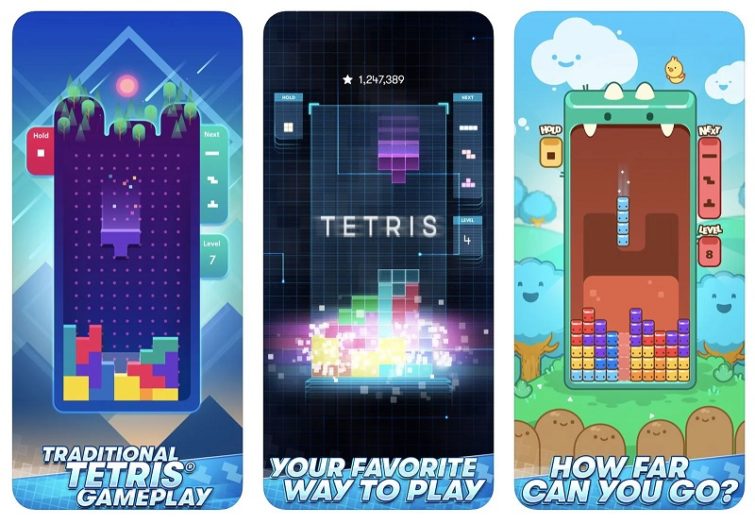Since its inception in 1984, Tetris has transcended the realm of video games to become a cultural icon. Developed by Russian software engineer Alexey Pajitnov, Tetris features simple yet addictive gameplay that has captivated players across generations. As we explore the evolution of Tetris from its humble beginnings on the Game Boy to its contemporary iterations on various platforms, we will uncover the reasons behind its lasting appeal and its impact on the gaming industry.
The Birth of Tetris: A Soviet Innovation

Tetris was created in 1984 while Pajitnov was working at the Dorodnitsyn Computing Centre of the Soviet Academy of Sciences. The game’s concept was inspired by a puzzle game called Pentominoes, where players arrange pieces to form a complete shape. Tetris’ innovative design involved falling tetrominoes, shapes composed of four squares, which players must rotate and position to create complete lines that vanish, earning points in the process.
The original version of Tetris was played on a computer called the Electronika 60, using a simple monochrome display. However, its real breakthrough came in 1989 when it was released on the Game Boy by Nintendo:
- Portable Gaming Revolution: The Game Boy’s portability allowed players to enjoy Tetris on the go, making it one of the best-selling games of all time.
- Bundled with Game Boy: Tetris was bundled with the Game Boy, ensuring that millions of players experienced the game alongside their new handheld device.
By the end of 1990, Tetris had sold over 35 million copies on the Game Boy alone, solidifying its status as a gaming phenomenon.
The Evolution of Gameplay Mechanics

As technology advanced, so did the gameplay mechanics of Tetris. Different versions and adaptations of the game emerged, each introducing innovative features:
- Graphics and Sound: From the 8-bit graphics of the original Game Boy version to the stunning visuals of modern consoles, Tetris has continuously evolved in terms of aesthetics. The introduction of sound effects and music also enhanced the gameplay experience.
- Multiplayer Modes: Tetris 99, released in 2019, brought a competitive twist to the classic formula. In this battle royale format, 99 players compete against each other, with the last player standing being crowned the victor.
- New Game Modes: Variants such as Tetris Effect introduced immersive soundscapes and visual effects that responded to player actions, creating a unique experience that combined gaming with art.
Technological Advancements and Platforms

As gaming technology progressed, Tetris found its way onto an array of platforms, from consoles to mobile devices:
- Home Consoles: Tetris transitioned to home consoles such as the NES, Sega Genesis, and PlayStation, each version adding new gameplay features and graphics.
- Mobile Gaming: The introduction of smartphones revolutionized mobile gaming. Tetris was adapted for iOS and Android, allowing players to enjoy the game anytime and anywhere.
- Virtual Reality: Recent adaptations like Tetris Effect: Connected brought Tetris into the realm of virtual reality, offering players an immersive experience that takes the classic game to new heights.
The Cultural Impact of Tetris

Tetris is not merely a game; it has significantly influenced culture and society:
- Psychological Studies: Research has shown that playing Tetris can lead to improved spatial awareness and cognitive abilities. The “Tetris Effect” describes a phenomenon where players start seeing the game in real life, a testament to its addictive nature.
- Global Appeal: Tetris has been translated into numerous languages and adapted for various cultures, making it a universal game. Its simplicity allows people of all ages and backgrounds to play and enjoy it.
- Art and Music: The iconic Tetris theme, composed by Russian musician Hirokazu “Hip” Tanaka, has permeated popular culture, appearing in commercials, films, and even orchestral performances.
Case Studies of Tetris’ Resurgence

Several key moments in recent history have led to Tetris’ resurgence in popularity:
- Tetris 99 (2019): This innovative multiplayer version gained critical acclaim and a dedicated player base by combining the classic gameplay with a battle royale format, capturing the attention of a new generation of gamers.
- Tetris Effect (2018): Released for PlayStation 4 and later for PC and Xbox, Tetris Effect introduced a sensory experience, blending music, visuals, and gameplay to create a meditative atmosphere.
- Competitive Tournaments: The annual Classic Tetris World Championship has revived interest in the original NES version, showcasing the skills of top players and encouraging nostalgic play.
The Future of Tetris
The future of Tetris appears bright as the game continues to evolve. The introduction of new technologies and trends in gaming could further transform the experience:
- Augmented Reality: Future adaptations could leverage augmented reality to create an interactive environment where players interact with the game in real-world settings.
- Cross-Platform Play: Enhancing multiplayer experiences by allowing cross-platform play could foster a larger community of players.
- Educational Applications: Developers are exploring the use of Tetris in educational settings to enhance learning in geometry and problem-solving.
Tetris has come a long way since its inception in the Soviet Union. From its early days on the Game Boy to its modern iterations on various platforms, the game has continually adapted to changing technology and player preferences. Its cultural impact, coupled with innovative gameplay mechanics, ensures that Tetris remains relevant in the gaming world. As we look toward the future, the potential for Tetris to evolve further is limitless, promising to captivate new generations of players and retain its status as a timeless classic. Ultimately, Tetris teaches us that simplicity can lead to complexity, and that a well-designed game can transcend its pixelated origins to become a part of our collective cultural heritage.